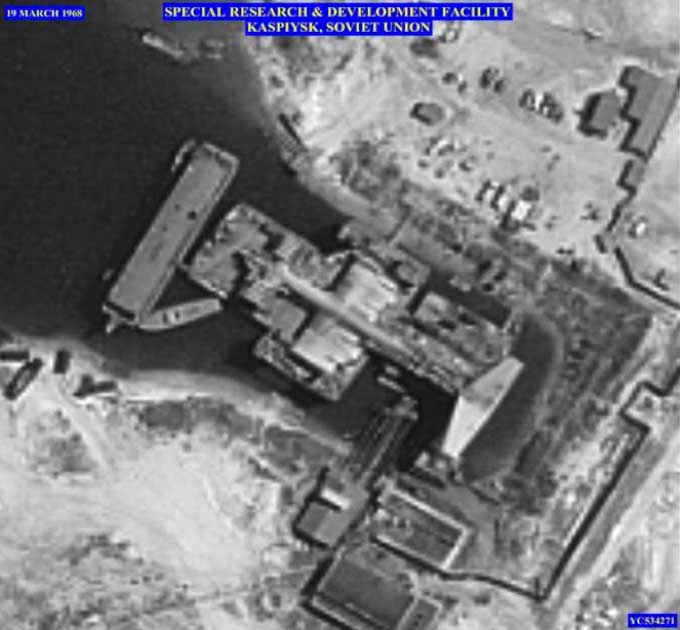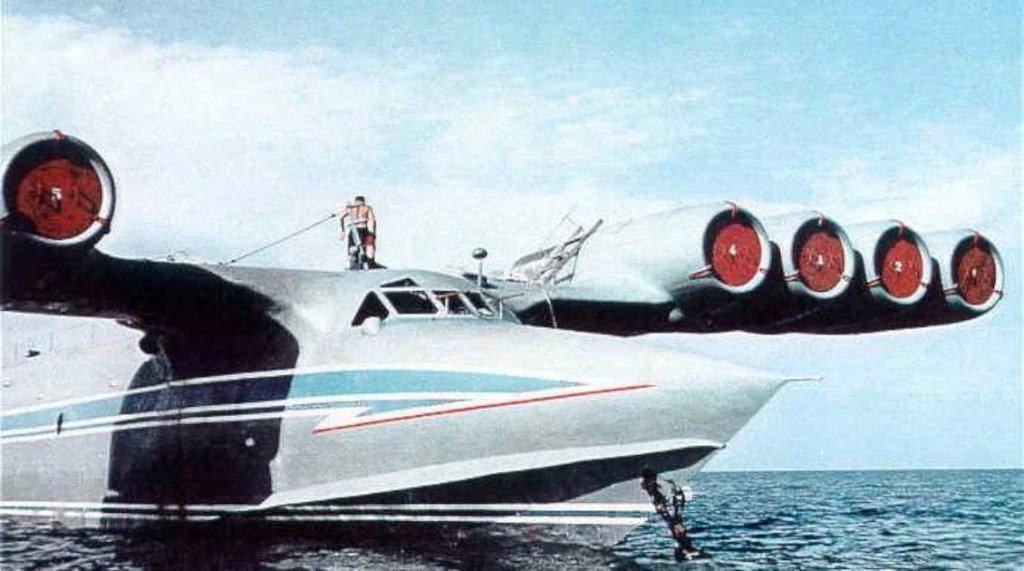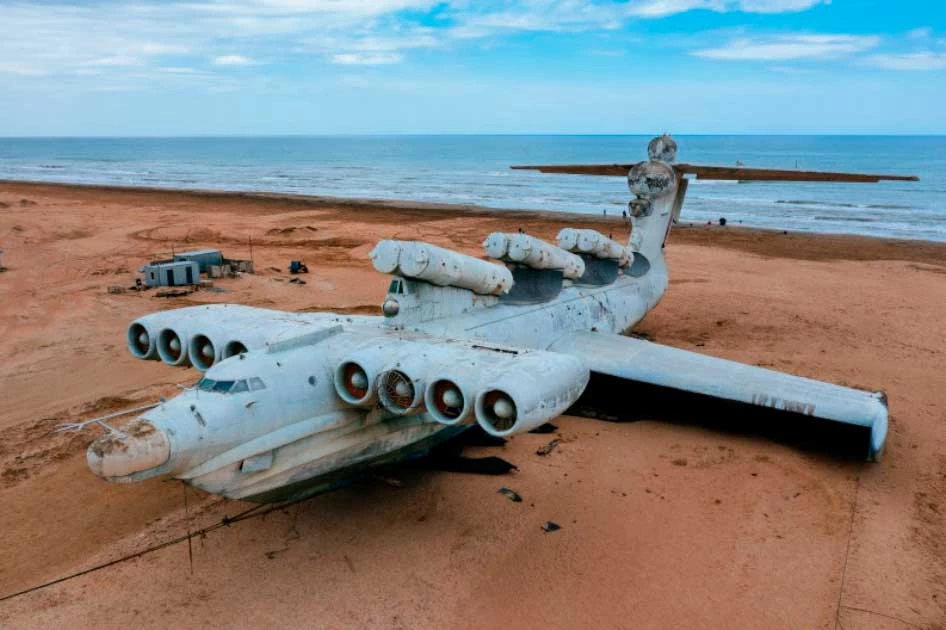The two major powers of the Cold war, the United States and Russia, went to extreme lengths to monitor each other as weapons of war were developed at breakneck pace. Secrecy was everything to these programs, as weapons developed in secret could be deployed against an unsuspecting enemy, tilting the balance of power.
Both sides went to great lengths to spy on each other to avoid such surprises, with a mix of conventional spycraft and airplane and satellite monitoring. New weapons were being developed all the time, and it was up to the analysts in Washington DC or Moscow to understand the threats brought to them by such espionage.
But when the CIA was handed satellite photographs of the Russian coastline of the Caspian Sea in 1967, they were shocked at what they saw. The Soviets had built, in secret, a giant aircraft, which sat apparently unfinished on the water.
And the Americans had no idea what it was.
The Caspian Sea Monster
Stung into action, the CIA developed a dedicated spy and monitoring program for what they dubbed the “Caspian Sea Monster”. They rushed to gather as much information as they could about this unknown aircraft, and what they found horrified them.

The Monster was almost 100 meters (330 feet) long, far bigger than any other aircraft then or now. The modern “double decker” Airbus A380 passenger plane, the largest in the world, is only 73 meters (240 feet).
Happily, the craft seemed unfinished. What wings that could be made out on the satellite photography were clearly too short to lift an airplane of that size, so the CIA felt that they had time to monitor the Monster as it was finished.
There was no time to lose, however. In secret, Project AQUILINE rushed a tiny unmanned drone the size of a large bird into production to monitor the Monster. It quickly became clear that this was no ordinary plane, and was in fact far closer to readiness than the United States thought. This plane didn’t have wings, it was true. But it didn’t need them either.
It would be 20 years before the Americans found out what they were looking at. The Monster was not a plane at all, but something else: a massive Ekranoplan.
The Magic of Ground Effect
It turned out the American analysts had been wrong. The Monster was designed to fly, it was true, but not like a conventional airplane. Instead, an Ekranoplan uses a special property of airflow which acts as a lifting force on aircraft when near the ground, known as the “ground effect”.
When aircraft are within a certain distance of the ground, they experience reduced drag because of the airflow around the vehicle interacting with the surface below. This produces additional lift and allows aircraft to be built with much smaller wings, provided they only fly close the surface. A large body of water such as the Caspian Sea made a perfect testing location for such vehicles.
Was it an aircraft? Was it a seaplane? The Monster was not truly either, and resembled nothing so much as a giant flying boat. Eight enormous engines, mounted on pylons at the front of the aircraft, allowed the huge craft to build up sufficient speed across the water to take off and fly, sustainably, above the waves.

Completed in June 1966 and then transported to testing grounds along the Volga River to the Caspian Sea, the Caspian Sea Monster remained a secret project of the Russians for the next 15 years, during which time it underwent continuous testing and development, flying no higher than 10 meters (33 feet) above the ground.
- Lost Soviet Cosmonauts: Cover-Ups of Deaths?
- The Hewitt-Sperry Automatic Airplane: The First Cruise Missile?
The Russians transported it under camouflage and only at night so that it remained a closely guarded military secret. The Ekranoplan was seen as a ray of hope, ushering in a new era of powerful military operations and rescue work. However, its design was not perfected, and it had to undertake many testing flights as the Russians came to terms with the technology.
The Fate of the Caspian Sea Monster
In 1980, the Monster crashed into the Caspian Sea due to pilot error, and was lost. The Soviet Union did not try to recover the aircraft from the waters, and it lay damaged on the surface of the sea for a week before finally sinking. There were no human lives lost in the incident.
Why give up on such a craft? Well, by this point the ageing Monster had been superseded by other projects. Project 903, which developed the next generation “Lun” class Ekranoplan was by this time in development as a successor of the Caspian Sea Monster, and had been since 1975.
The Lun class Ekranoplan was used by the Soviets till the late 90s. Smaller, and with only a third of the lifting capacity of the Monster, this later development never saw service either, and the project was quietly abandoned with the fall of the Soviet Union.

Ekranoplans exists today, but only as small private aircraft, novelties rather than weapons of war. The United States company Boeing proposed a similar project called the Pelican ULTRA in the early 2000s. This would have resulted in a larger craft even than the Monster, but it was never built and the design exists as a concept only.
Today the Caspian Sea Monster remains an oddity of the Cold War, a strange craft which never became the practical transport craft the Soviets had hoped. Had it proved feasible, its lifting capacity of 300,000 kg (660,000 lb) would have allowed it to transport Soviet forces and military infrastructure across great distances and far faster than the West, giving the Soviets a decided edge in reactiveness and rapid deployment.
For a moment there, it really had the CIA worried.
Top Image: The Caspian Sea Monster. Source: KE Ceprees / CC BY-SA 3.0.
By Bipin Dimri